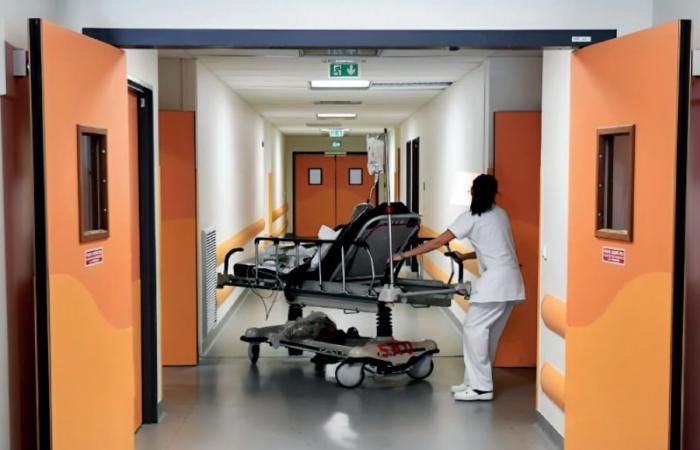MDespite the reforms and action plans announced in recent years, the emergency department remains the poor relation of the Moroccan health system. To date, the treatment of medical emergencies remains well below citizens’ expectations and international standards. Between lack of human resources, insufficient equipment and overload of hospital establishments, the situation is considered critical. In 2020, the Ministry of Health counted 89 local medical emergencies (UMP) distributed in an unbalanced manner between the different regions of Morocco.
Some, like Fez-Meknes and Marrakech-Safi, are better equipped with infrastructure with 16 and 13 UMPs respectively. On the other hand, the Casablanca-Settat region, despite its economic and demographic importance, only has four units. This regional imbalance leaves certain areas in serious medical precariousness, with little or no access to emergency care, exacerbating inequalities in the health care of citizens. Moroccan emergency services are often overwhelmed, in particular because of the influx of patients seeking non-urgent care.
In this regard, the former Minister of Health, Khalid Ait Taleb, declared in 2023 that 80% of non-urgent care services are provided by these services. This situation is, according to professionals, aggravated by the lack of coordination between health centers and local units, which creates an overload in emergency services. According to Dr. Tayeb Hamdi, doctor and researcher in health policies and systems, the emergency situation in Morocco is the consequence of a combination of dysfunctions.
“The Economic, Social and Environmental Council (CESE), in its opinion on medical emergencies in Morocco, had drawn up an in-depth assessment of the major challenges affecting this sector. This diagnosis highlights several problems, including significant disorganization, coordination difficulties, a shortage of nursing staff, insufficiencies in medical transport, etc. These dysfunctions manifest themselves at each stage of the emergency care chain, from the first request for services by the citizen to final care,” underlines Dr. Hamdi. To remedy these dysfunctions, the EESC has proposed a series of measures structured into five axes.
The first axis recommends a territorial approach to establish a regional organization that better responds to local needs, by integrating prevention and planning systems adapted to medical emergencies. The second focuses on pre-hospital intervention, suggesting increasing public awareness and expanding the role of SAMU. This component also includes the integration of front-line doctors, namely general practitioners and family doctors, into the emergency system and the improvement of medical transport for better coordination.
The third axis highlights the importance of facilitating access to emergencies by introducing third-party payment, allowing citizens to benefit from care without financial obstacles. The fourth addresses the crucial issue of the shortage of medical personnel specialized in emergencies, with an urgent need to recruit more specialized doctors and nurses. Finally, the fifth axis aims to strengthen the provision of emergency care, in particular by integrating the training of general practitioners and family doctors in emergency medicine.
“By raising public awareness, by basing emergency medicine on general medicine and family medicine and by digitalizing our health system, we can improve this emergency medicine which is a pivot of the health system and which often constitutes the first point of contact between the citizen and the health system,” insists Dr. Hamdi. In the same vein, Dr. Tayeb Hamdi notes the need to set up a single emergency number on a national scale, in order to simplify citizens’ access to these emergency services and in order to avoid wasting time.
“Thanks to this single number, citizens can access the right emergency services more quickly, without fumbling between different numbers or risking contacting the wrong service. This system optimizes medical treatment time by directly directing patients to the appropriate emergency service. With a single number, operators can effectively guide applicants to the appropriate health facility, even in the event of saturation, without unnecessary travel between hospitals,” he explained.
“Such a system is crucial for the coordination of emergencies, guaranteeing optimized management of patient flows and reducing the unnecessary load on unsuitable structures, while maximizing the chances of survival thanks to rapid treatment. This national number plays an essential role in the coordination, organization and efficiency of medical emergencies, because in critical situations, every minute saved can literally make the difference between life and death,” continues Dr. Hamdi.
Despite initiatives taken to compensate for deficiencies, emergency services in Morocco remain in crisis. As a reminder, a national plan was designed in 2013, with a budget of 500 million dirhams, to modernize emergencies and improve pre-hospital and hospital care. In 2019, a new acceleration plan followed, without however managing to eliminate the dysfunctions identified. For the year 2025, the government seems determined to remedy the problems linked to the emergency service in Morocco.
According to the report on autonomously managed state services (Segma), accompanying the PLF 2025, the government intends to remedy the various dysfunctions of the public hospital through several actions, namely supporting hospital establishments in the development of hospital emergency plans as well as the establishment of specialized emergency services and the strengthening of emergency human resources.






